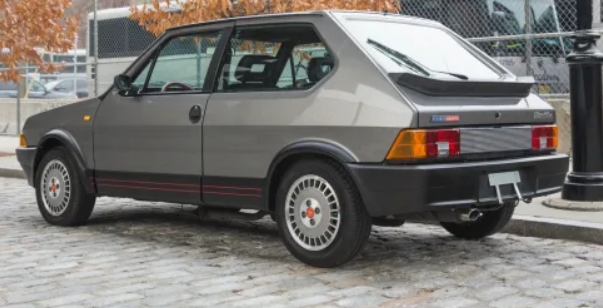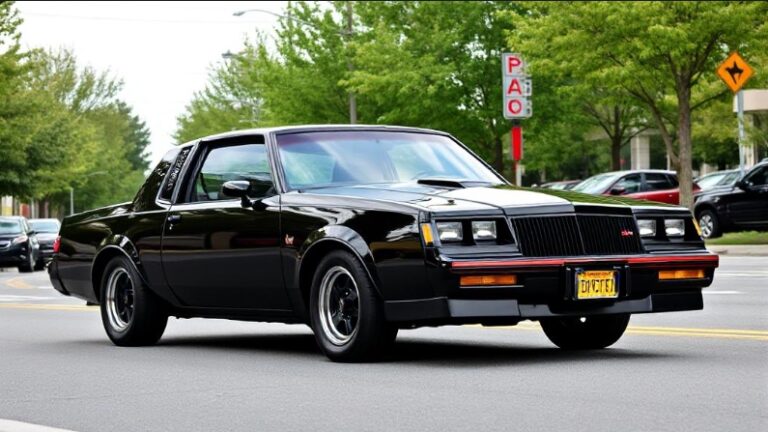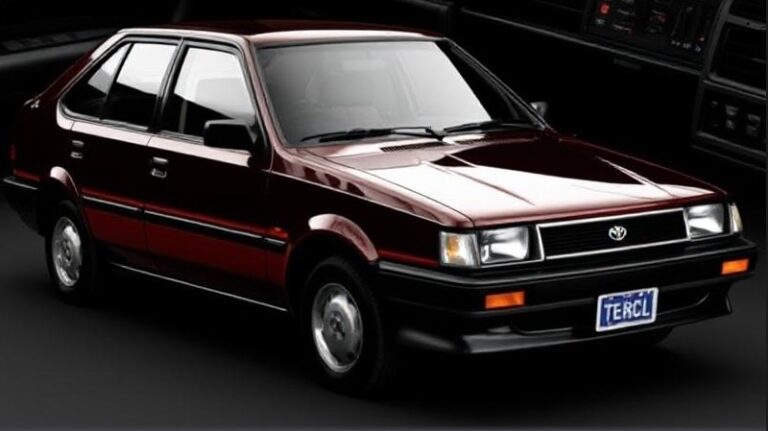The Evolution of the Fiat Ritmo
The Fiat Ritmo, also known as the Fiat Strada in some markets, is a compact car produced by the Italian automaker Fiat from 1978 to 1988. Renowned for its distinctive styling, innovative design, and practical engineering, the Ritmo marked an important chapter in Fiat’s history during the late 20th century. This article chronicles the development and evolution of the Fiat Ritmo, detailing its production years, various models, trim levels, and notable features throughout its ten-year production span.
Introduction and Development Background
Launched in 1978, the Fiat Ritmo was developed as a modern replacement for the aging Fiat 128. It was conceived to compete in the burgeoning subcompact segment, emphasizing sporty styling, practicality, and affordability. The design was led by the renowned Italian designer Dante Giacosa, whose work emphasized aerodynamic efficiency and innovative use of space.
The Ritmo was developed under the project name “Bravo/Brava,” and its name “Ritmo,” meaning “rhythm” in Italian, aimed to evoke a sense of liveliness and modernity. The car’s unibody construction, front-wheel drive layout, and transverse engine placement reflected contemporary automotive engineering trends.
Production Timeline and Major Generations
The Fiat Ritmo was produced from 1978 until 1988 across various markets worldwide. Throughout its lifespan, it underwent significant updates, facelifts, and model variations to adapt to market demands and technological advancements.
- First Generation (1978–1983): The initial model introduced the distinctive wedge-shaped styling and a range of trims.
- Second Generation (1983–1988): A comprehensive facelift and mechanical updates enhanced the car’s appeal, alongside new trim levels and variants.
First Generation Fiat Ritmo (1978–1983)
Introduction and Design Features
The first-generation Fiat Ritmo debuted in 1978 with a revolutionary design characterized by its aerodynamic wedge shape, low coefficient of drag, and practical interior layout. Its exterior featured sharp lines, pop-up headlights (later replaced by fixed units), and a distinctive front grille.
Engine Options
Initially offered with a variety of petrol engines, including:
- 1.0-liter SOHC engine (~58 hp)
- 1.1-liter SOHC engine (~60 hp)
- 1.3-liter SOHC engine (~75 hp)
- 1.5-liter SOHC engine (~85 hp)
Diesel options appeared later, notably the 1.3-liter diesel engine, expanding its appeal in European markets.
Models and Trim Levels
The first-generation Ritmo was available in several trim levels, often differentiated by equipment and features:
- L: Base model with minimal features, manual windows, and basic interior.
- CL: Upgraded trim with better interior, improved instrumentation.
- GL: More luxurious, with features like tachometer, better upholstery, and upgraded audio.
- GT: Sportier variant, featuring a 1.3 or 1.5-liter engine, sport suspension, and distinctive styling cues.
- Abarth 130 TC: High-performance version developed in collaboration with Abarth, featuring a turbocharged 1.3-liter engine producing around 105 hp, sport suspension, and enhanced braking.
Special Editions
- Ritmo 105 TC: Sport model with turbocharged engine.
- Ritmo 125 TC: Turbocharged 1.3-liter engine, producing approximately 105 hp, aimed at sporty drivers.
Design and Features
The first-generation Ritmo was lauded for its spacious interior, practical hatchback design, and innovative engineering. The car’s suspension was a combination of MacPherson struts at the front and torsion beams at the rear, providing a comfortable ride.
Transition and Facelift (1983)
By 1983, Fiat introduced a series of updates to keep the Ritmo competitive. The main changes included:
- Front grille redesign for a more modern look
- Modified bumpers and taillights
- Slight interior updates for improved ergonomics
- Introduction of new engines and trim levels
Second Generation Fiat Ritmo (1983–1988)
Design and Styling
The second-generation Fiat Ritmo showcased a substantial facelift, giving it a more contemporary appearance. The wedge shape was softened, and the design adopted a more rounded, aerodynamic profile. The headlights transitioned from pop-up units to fixed units integrated into the bodywork, reflecting safety and manufacturing changes.
Engine and Mechanical Updates
Engine options were expanded and refined:
- 1.0-liter FIRE engine (~54 hp)
- 1.1-liter FIRE engine (~55 hp)
- 1.3-liter SOHC engine (~75 hp)
- 1.4-liter FIRE engine (~78 hp)
- 1.6-liter SOHC engine (~85 hp)
- Diesel variants included 1.3-liter and 1.6-liter units
Trim Levels and Variants
The second-generation Ritmo continued with a range of trims:
- L: Entry-level, basic features
- CL: Mid-range, added comfort features
- S: Sportier, with sport suspension, alloy wheels, and distinctive styling cues
- Super: Higher trim with enhanced interior and equipment
- GT: Sport model with 1.6-liter engine, sport suspension, and rally-inspired styling
- Abarth 130 TC: Continued high-performance variant with turbocharged 1.3-liter engine, upgraded suspension, and sportier aesthetics
Special Editions and Variants
- Ritmo 130 TC: Turbocharged model, with increased power (~105 hp)
- Ritmo 125 TC: Turbocharged 1.3-liter, popular in rally racing circles
- Ritmo SX: Sporty trim with additional styling and interior features
Features and Technological Innovations
The second-generation Ritmo introduced improvements such as:
- Better safety features, including reinforced bumpers
- Enhanced interior ergonomics and comfort
- Optional electric windows and improved audio systems
- Introduction of fuel injection on certain models, improving efficiency and performance
Notable Variants and Special Models
Abarth 130 TC
Throughout the Ritmo’s production, the Abarth 130 TC remained a highlight, representing Fiat’s sporty and performance-oriented engineering. With a turbocharged 1.3-liter engine, it delivered around 105 hp, enabling brisk acceleration and a top speed exceeding 200 km/h. It featured sport suspension, upgraded brakes, and distinctive aesthetic details like decals and alloy wheels.
Ritmo Rally and Motorsport Variants
Fiat also produced rally versions of the Ritmo, notably the 130 TC and other tuned variants aimed at motorsport. These models competed in rally events, showcasing the car’s agility and durability.
.
MANY auto lovers not only spend time in their garages to tinker on their autos, but have other projects going on in there as well. Wood working is a popular pastime for the creative type of individual. Not sure what to make next? Or thinking about getting into this kind of hobby? There’s lots of possibilities… Here’s some of them…

.
End of Production and Legacy
The Fiat Ritmo was discontinued in 1988 after a decade of production. It was succeeded by newer models like the Fiat Tipo, which inherited some of its practical design philosophy and popularity.
Legacy and Impact
The Ritmo’s innovative styling and engineering made it an icon of its era. It was appreciated for its spacious interior, sporty variants, and affordability. The car’s design influenced subsequent Fiat models and remains a classic among enthusiasts today.
Summary
| Year | Models & Variants | Notable Features |
|---|---|---|
| 1978–1983 | Base models, GT, Abarth 130 TC, 125 TC, various trims | Aerodynamic design, diverse engine options |
| 1983–1988 | Facelift models, S, Super, Rally variants, Turbo editions | Rounded styling, technological updates |
Note: The specific trim names and availability varied by market, with some regions receiving unique editions or naming conventions.
Conclusion
The Fiat Ritmo stands as a testament to Italian automotive innovation of the late 20th century. From its pioneering design to its sporty variants, it played an essential role in Fiat’s lineup during its decade-long production. Its evolution from a wedge-shaped hatchback to a more rounded, modern vehicle reflected the changing automotive landscape of the 1980s, and its legacy endures among classic car collectors and enthusiasts worldwide.







